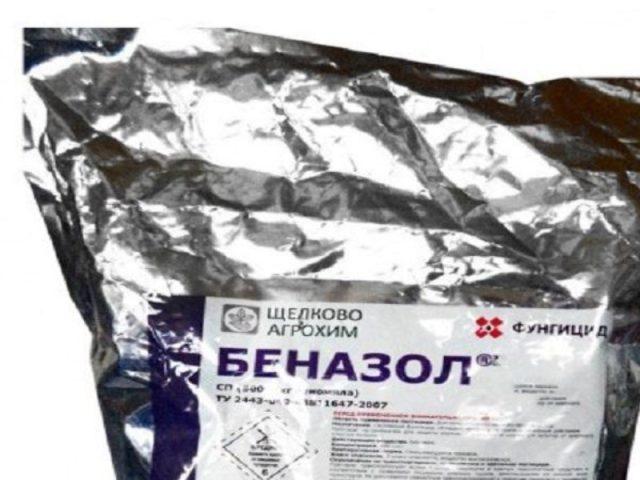Content
Tomatoes, like other garden crops, are susceptible to disease. And one of them is fusarium wilt. The disease is a common one, so sooner or later every gardener encounters it. It is important to know how to protect plants from damage, as well as what to do when the first warning signs appear. Therefore, it is worth studying in advance the description and treatment of tomato fusarium, which will allow you to recognize the disease at an early stage and prevent its further spread.

Fusarium can destroy up to 50% of the crop
What is fusarium blight on tomatoes?
This disease belongs to the fungal category. It spreads throughout the plant’s vascular system and disrupts metabolic processes. The causative agent of fusarium is the soil fungus Fusarium oxysporum f.sp. lycopersici, which penetrates tomato tissue through growth points and open wounds of thin lateral roots.
The incubation period of fusarium is 7-30 days, depending on the composition of the soil, the age of the plants and weather conditions.The disease can affect crops at any stage of development. But it manifests itself with greater force during the formation and ripening of tomatoes, when the plants are weakened and their immunity decreases.
Reasons for appearance
Fusarium wilt in tomatoes develops at high soil humidity and temperature, and is especially intense on acidic and sandy substrates. Most often, the disease affects tomatoes grown in greenhouses. Fusarium develops at an accelerated rate at temperatures of +27-28 °C, and slows down at temperatures above +34 and below +20 °C. Increased nitrogen content in the soil contributes to the rapid spread of the disease.
The main provoking factors for the development of fusarium blight in tomatoes;
- infected planting material;
- using dirty garden tools;
- dense plantings;
- non-compliance with crop rotation;
- sudden changes in night and day temperatures;
- excessive use of fertilizers containing chlorine;
- close occurrence of groundwater;
- poor lighting of plants;
- drying out of the root system;
- insufficient ventilation of the greenhouse.

Watering with a hose accelerates the development of the disease
Signs of appearance
The effectiveness of treating fusarium wilt of tomato seedlings directly depends on the stage at which the disease was detected. Therefore, the sooner a gardener can recognize alarming symptoms, the higher the chances of preserving the future harvest.
Characteristic signs of fusarium blight in tomatoes:
- sudden wilting of the tips of the shoots;
- leaves lose turgor, despite regular watering;
- the plates acquire a yellowish or light green tint;
- necrotic spots appear along the veins;
- the cut of the shoots is light brown;
- A light or pinkish coating appears on the affected areas.
Why is the disease dangerous?
The danger of Fusarium wilt of tomatoes is that it is difficult to treat. In most cases, the disease can be recognized already at the stage of development of irreversible processes in the plant tissues, which leads to its death. After all, pathogens initially infect the root system of tomatoes, disrupting the nutrition of the above-ground parts. And then fusarium moves through the vascular system to the leaves and fruit clusters. And if you do not treat fusarium at the initial stage of development, then after 2-3 weeks the bushes will completely wither.
The fungus also persists in the seeds of the affected plant. Therefore, experienced gardeners recommend always treating planting material with a fungicide before sowing.
How and how to treat tomato fusarium
There are several basic ways to treat tomato fusarium in a greenhouse and open ground. But you should understand that it is recommended to use them comprehensively, which will allow you to fight the fungus at any stage of plant development. Otherwise, treatment may be ineffective or reduce the quality of the future harvest.
Folk remedies
This method of treating fusarium wilt of tomatoes in a greenhouse and open ground can be used during the flowering period, as well as as a preventive measure.But if obvious signs of the disease appear, this method will not help solve the problem, but will only aggravate it, since time will be lost.
Folk remedies that will help avoid damage to tomatoes by fusarium:
- Add 35 drops of iodine and 50 g of grated laundry soap to 1 liter of milk. Stir everything thoroughly until a homogeneous composition is obtained. To treat fusarium, spray evenly on the leaves and shoots of tomatoes in the morning, as well as the soil at the base of the plants.
- Grind ten cloves of garlic to a paste consistency, add 1 liter of water and leave for 24 hours. After the waiting period, add 8 liters of water, stir and strain. To treat fusarium blight, you need to treat the tomato bushes with the resulting composition and water them.
- Pour 200 g of wood ash into 1 liter of hot water and leave for 24 hours. After the waiting time, add 9 liters of water and rub 100 g of laundry soap. Use the resulting composition to treat fusarium and other fungal diseases, spraying the bushes and the soil around them every week at least three times.
- Place 100 g of onion peels in a saucepan and fill it with 5 liters of warm water. Cook the product over low heat for 30 minutes after boiling. After this, leave the solution for eight hours, and then use it for spraying and watering tomato bushes to prevent fusarium.
Chemical preparations for fusarium blight of tomatoes
The disease can also be controlled using chemical fungicides. Their advantage is that they have a systemic effect, penetrate the tissues of the affected plant and inhibit the further development of the fungus. However, it is recommended to carry out treatment immediately when even minor signs of fusarium appear or weather conditions favor the development of pathogens.Only in this case can therapy bring a positive result.
Recommended drugs for the treatment of fusarium in tomatoes:
- Strekar. One of the active components is phytobacteriomycin, which quickly penetrates the vascular system of the affected plant and increases immunity to pathogens. And carbendazim, also included in the drug, stops the reproduction of pathogens and inhibits their development. The protective effect lasts for 2-3 weeks. For treatment, it is necessary to spray and water the tomatoes.
Strekar should not be used during flowering or near water bodies.
- Benazol. The active component of the drug is benomyl at a concentration of 500 g per 1 liter. An additional component is carbendazim. Both substances work well together and provide comprehensive protection. The product is available in powder form, which completely dissolves in water.
Benazole is suitable for the prevention and treatment of fusarium
- Fundazol. The active ingredient of the drug is benomyl in an amount of 500 g per 1 liter. To prepare a working solution, you need to dissolve 10 g of the product in 10 liters of water. Use the resulting solution for spraying and watering
Fundazol is recommended to be used twice a season
Biological products
To treat fusarium, it is recommended to use biological products as part of complex treatment. They have a gentle effect and have a minimum waiting period, so it is important to use them during the ripening period of the crop, if the need arises.
The most effective biological products for the treatment of fusarium:
- Fitosporin.Available in the form of powder, paste, concentrated liquid. The active component is living cells and spores of Bacillus subtilis, which can suppress the development of fusarium. The working liquid for processing and watering tomatoes must be prepared two hours before use. Use the product in dry weather at a temperature not lower than +15 °C.
Fitosporin should not be dissolved in tap water containing chlorine.
- Trichodermin. The drug is sold in the form of tablets. Contains live spores and mycelium of the fungus Trichoderma, as well as products of its metabolism. To treat fusarium blight in tomatoes, you need to dissolve 20 g of the product in 5 liters of water. The resulting solution is recommended to be used for watering and treating leaves.
Trichoderin should not be used together with chemicals.
Treatment of fusarium blight on tomato seedlings
Methods for treating fusarium wilt of tomato seedlings in a greenhouse do not differ from adult plants. However, in this case, it is recommended to give preference to systemic chemical drugs, since they have a rapid, targeted effect. This allows you to eliminate the problem and speed up the recovery of seedlings, without fear of toxins getting into the fruits.
How to protect tomatoes from fusarium
It is easier to prevent any disease than to treat it in the future. Therefore, in order to avoid damage to tomatoes by fusarium, it is recommended to follow simple prevention rules. They are unable to completely eliminate the likelihood of developing the disease, but reduce it to a minimum.
Basic measures to protect tomatoes from fusarium blight:
- disinfection of seeds and soil before sowing;
- planting green manure at the end of each season;
- timely destruction of plant residues;
- carrying out fertilizing taking into account the stage of development of the bushes;
- compliance with the planting scheme;
- avoiding overwatering;
- regular weeding and ventilation.
Tomatoes resistant to fusarium
In order not to subsequently treat tomatoes for fusarium blight, it is necessary to select varieties that have increased resistance to this disease. Among them there are often tomatoes with an extended fruiting period.
The most resistant varieties and hybrids to fusarium:
- Macarena;
Macarena belongs to the category of early ripening species
- Alaska;
Tomato Alaska universal purpose
- Sanka;
Sanka needs stepsoning up to the first brush
- Evolution.
Evolution is characterized by high productivity
Conclusion
Having studied the description and treatment of tomato fusarium, you can count on the fact that the disease will not go unnoticed at an early stage. In this case, the gardener will be able to take the necessary measures to protect the bushes. This means that you can count on a good harvest, even despite unfavorable factors.

















